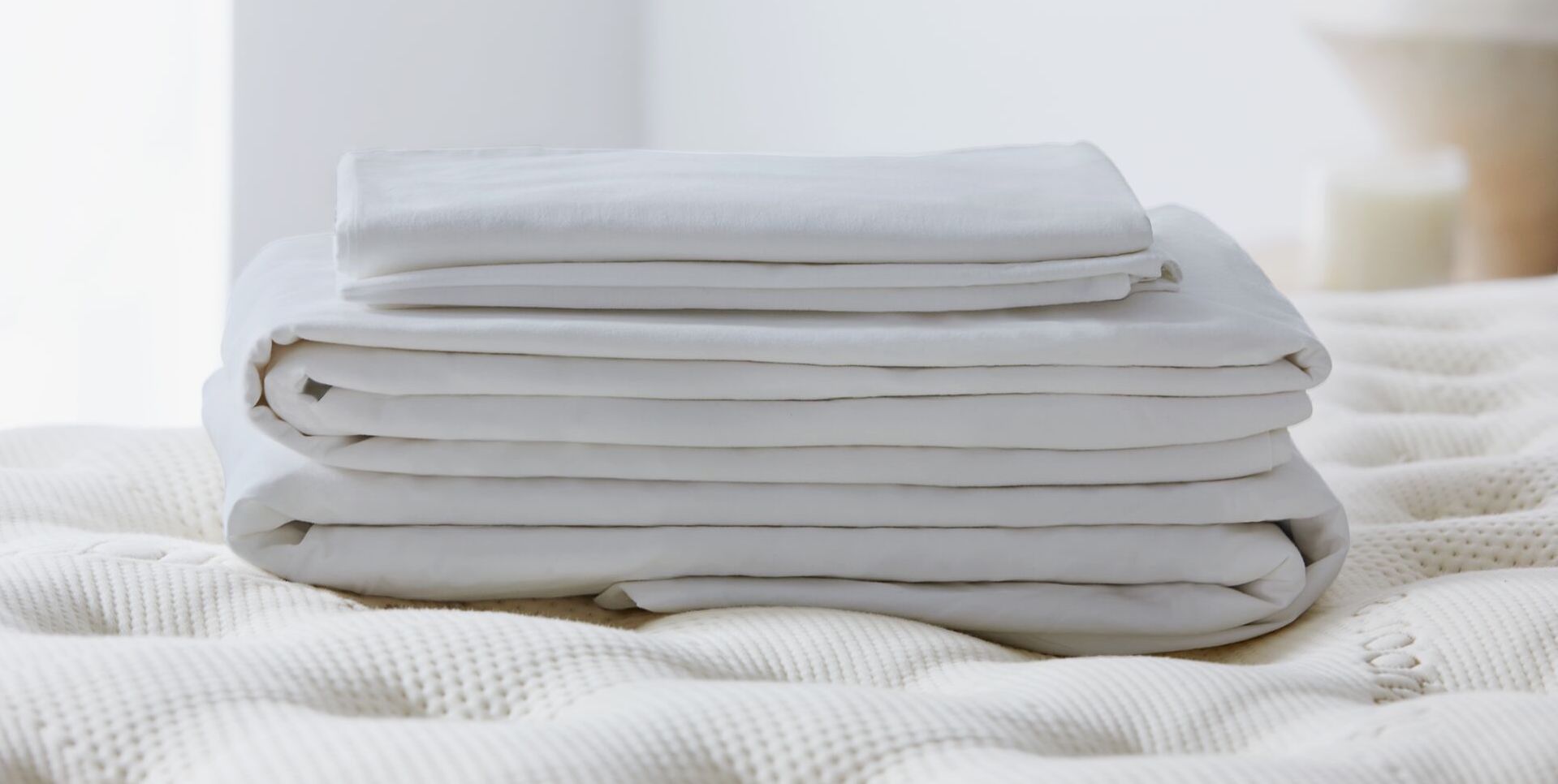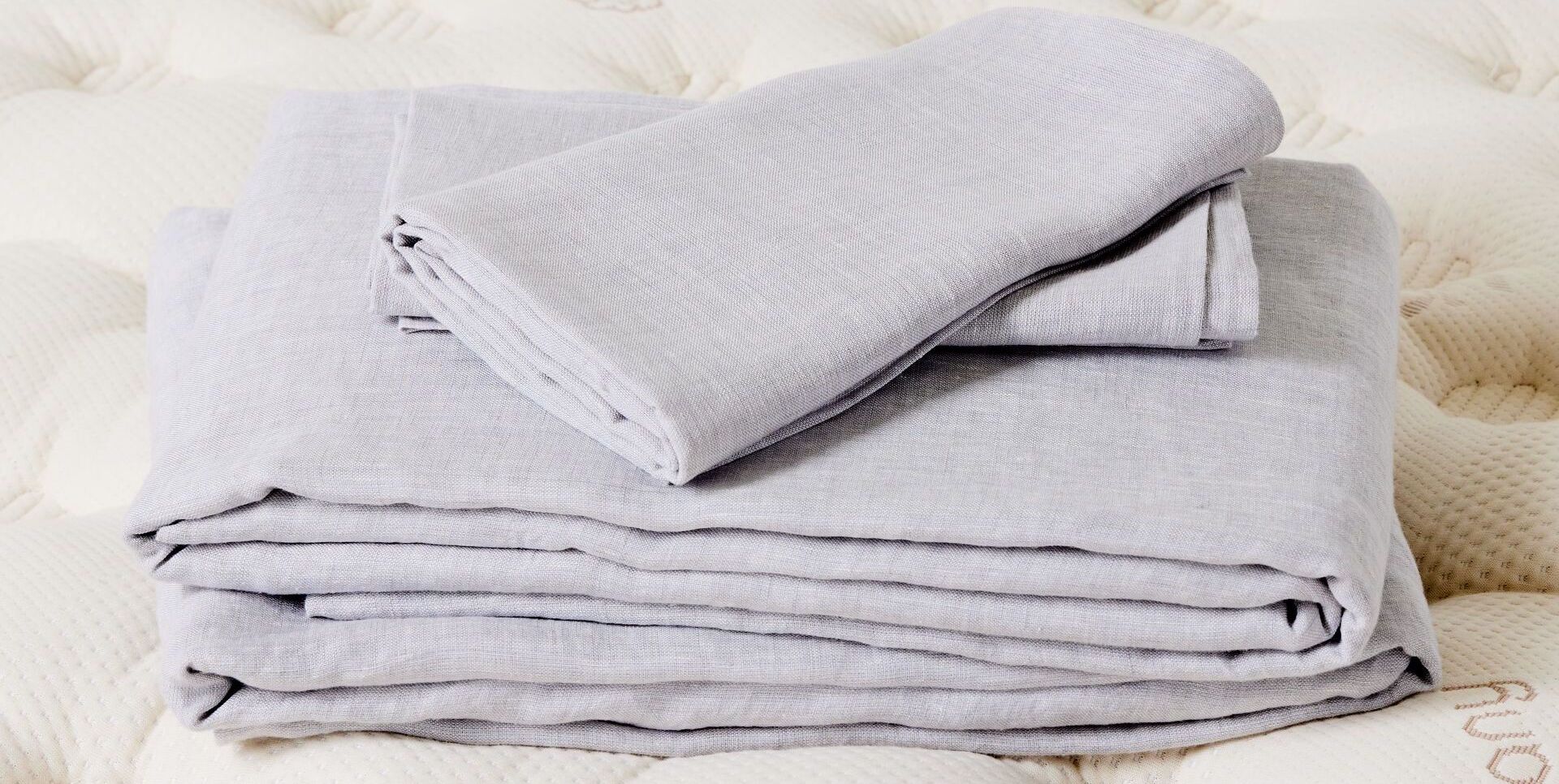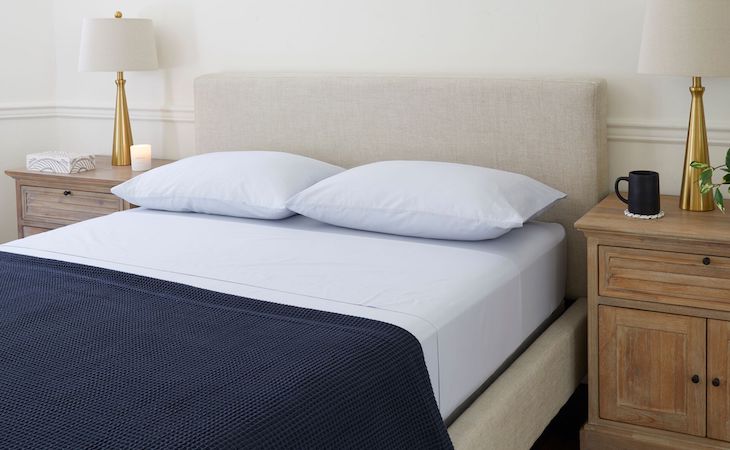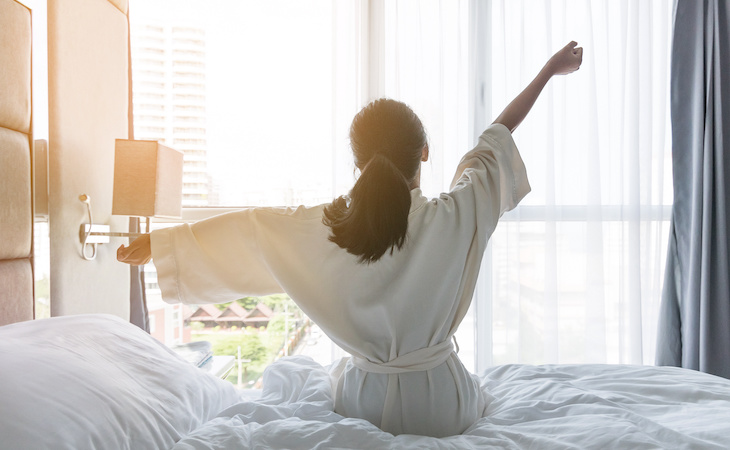The first step to getting a good night’s sleep is making sure your bedroom is set up just right. “It is very important for the bedroom to be a pleasant surrounding—providing a sense of order, tranquility, calmness, and relaxation,” says Terry Cralle, RN, certified clinical sleep educator.
Choosing the colors of your surroundings goes a long way in creating an atmosphere that is good for your sleep since different hues can have major impacts on your mood and state of mind, research shows. “Color can carry important meaning and can have an important impact on people’s affect, cognition, and behavior,” according to a 2014 study on the topic. Though more research still needs to be done, initial indications exist about which colors are best for creating a calming ambiance.
“The color of our sleep environment can influence our sleep—helping us to relax and unwind at bedtime,” says Cralle.
The best bedroom colors for sleep
Want to figure out which piece of the color wheel is best for your bedroom? Read ahead for more about the optimal hues for catching Z’s.
Cool colors
The ocean on a lazy summer day. A cloudless sky on the start of a road trip. Blue is often associated with some of the most relaxing and calming moments, so it’s unsurprising that cool colors like blue and green tend to be good picks for bedrooms. Studies have indicated that “shorter wavelength” colors, like blue, tend to feel more relaxing and cool.
Research from the University of Kentucky Cooperative Extension Service (UKCES) shows that blue can also create a physical response in your body and has been shown to lower blood pressure and pulse rate. “Blue and green are associated with calm, security, and peace,” the organization says.
In a survey of 2,000 UK homes conducted by hotel chain Travelodge, respondents who had blue walls recorded getting the most shut-eye—nearly eight hours of sleep. More than half of respondents who had cerulean colored bedrooms also said they woke up feeling happy.
Bottom line: Don’t want to count sheep? Pick out a celeste-like color for your walls, bedspread, or sheets.
Warm colors
Stop signs, red lights, and ambulance sirens: These attention snagging things all have one major thing in color—a warm eye-catching color. “Purples, reds, and oranges are all considered warm colors, which are considered more alerting and stimulating,” says Cralle—not exactly what you want when you’re trying to wind down for the day.
In some people, the color can even provoke an initial physical reaction due to its association with certain feelings and memories, according to the UKCES. “Color may bring about a reflex action on the vascular system, but this may be brought about through feelings and emotions,” the organization says. “Some studies indicate that red tends to increase perspiration, excite brain waves, and raise the blood pressure, pulse rate, and respiration.”
As we get older, our preference toward cooler colors and away from warmer ones increases, research shows. “A greater liking for the colors in shorter wavelengths such as blue and green than for colors of longer wavelengths such as red, orange, and yellow comes with maturity,” UKCES says. This may explain why a child who had a red race car bed when he was younger would gravitate toward a more neutral-colored sleep environment as he gets older. (Here’s how to use the Pantone Color of the Year in the bedroom.)
Related: How to sleep when your bedroom is also your office
Neutral colors
There’s a reason that some of the most relaxing places in the world—spas and five-star hotels to name two—steer towards neutral color schemes. Neutral earth tones are often thought of as relaxing because they remind us of nature, Cralle says. Additionally, according to feng shui—a system for how best to arrange your surroundings to create harmony—“earth- or skin-based tones and neutrals promote positive energy flow and are calming,” she says.
You’ll also notice that many duvets, blankets, and sheet sets will come in neutral or earth-like colors for their calming effect. Additionally, white sheets carry a strong association with being in the lap of luxury at a hotel during a getaway. If vacation vibes are what you’re aiming to bring home, then fluffy pillows and all-white sheets may be just what the doctor ordered.
As for your walls, regardless of the color you pick, you’ll want to keep the sheen to a minimum and avoid glossy finish paints in the bedroom, says Cralle. Choose paints that are softer, with a flat finish instead.
You also shouldn’t stop at the wall color for creating a good ambiance for sleep. “Make sure the rest of the bedroom is designed around a good night’s sleep,” Cralle says. That means avoiding clutter like unfolded laundry, magazines or exercise equipment, removing overcrowding furniture, and making sure it’s dark, quiet, and cool at night. “Bedroom optimization really is the first step in adopting a healthy sleep lifestyle,” she says.
Ready to declutter your bedroom? Read our Q&A with a KonMari expert.











